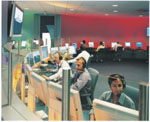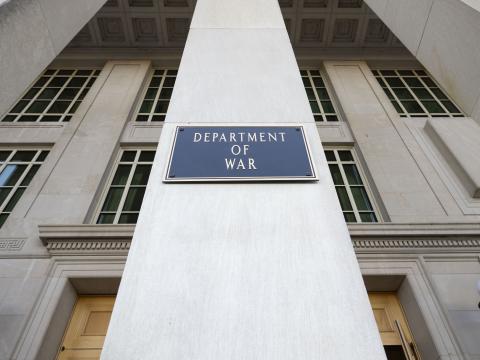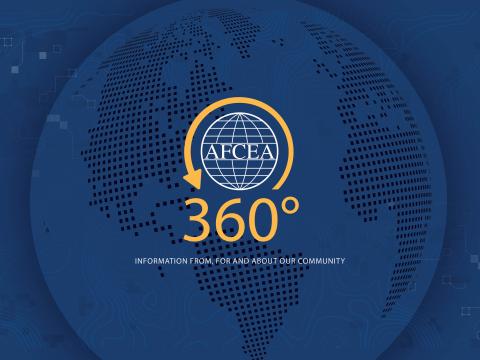Major Programs Open Europe's Checkbook
 |
| Europe’s armed forces are scheduled to procure large numbers of armored vehicles over the coming decade. These forces will require advanced command and control systems such as the German army’s Faust equipment shown here. The demand for fitting vehicles with battlefield management systems will drive sales in this sector of the European tactical communications market. |
After several years of tight budgets, key European defense market sectors are poised for growth with satellite communications systems, major network infrastructure projects and battle management equipment on the shopping list. But analysts predict that market segments such as handheld tactical radios will either remain at current levels or shrink due to decreased sales.
This loosening of national purse strings is the result of a combination of changes in the global strategic situation and political decisions to place NATO and European Union (EU) forces on an expeditionary footing. Command, control, communications, computers, intelligence, surveillance and reconnaissance (C4ISR) systems are crucial for military force projection to support both warfighting and peacekeeping efforts. The move toward a greater international presence by EU and NATO forces, coupled with a desire for interoperability, has compelled
According to Konstantinos Tigkos, a senior defense analyst with Frost and Sullivan,
Strategic communications is subdivided into three categories; satellite systems, long-range radio equipment and fixed communications. Tigkos maintains that the strategic communications sector is the only part of the European C4ISR market expected to experience substantial growth over the next decade as nations such as
Funding for Satcom BW is balanced between commercial and government spending.
Satellite communications represents the largest part of the European strategic communications sector, occupying almost 53 percent. Tigkos adds that fixed telecommunications and long-range high frequency (HF) radio communications account for the remaining 47 percent, with HF contributing only 5 percent to 6 percent of this total.
European commercial satellite services are expected to expand greatly over the coming years. Tigkos cites the unpredictability in the demand for satellite communications as a key driver for this growth. Because spacecraft deployments and required bandwidth cannot always be planned, many armed forces consider the use of commercial services as a backbone or a complement to their dedicated networks.
Commercial satellite systems also are using innovations attractive to military customers. One new capability is the broadband global area network (BGAN) offered by Inmarsat. BGAN provides L-band ultrahigh frequency (UHF) communications that have a performance comparable to X-band or Ku-band systems. “This means you will be able to have near streaming video but without having to deploy the bulky and heavy infrastructure required for Ku- and X-band terminals,” he says.
L-band terminals are smaller and less expensive, enabling European armed forces to receive the same communications capability for less money. Inmarsat also guarantees end-to-end security through NSA Type 1 encryption. “The trend is for commercial offerings to get closer to the standards found in dedicated military satellites,” Tigkos observes.
Strategic HF communications systems are deployed by
The combination of these factors makes HF a good choice for an entry or backup strategic communications solution, but he cautions that long-range radio communications are vulnerable to atmospheric conditions and require skilled personnel to operate. The overall European market for HF equipment and related services is expected to be approximately $170 million per year over the next decade.
Fixed communications is another major growth area. This subcategory consists of a variety of systems ranging from standard telephone systems to military message handling equipment. Tigkos notes that the market is being driven by the move to Internet protocol (IP)-based applications taking place in both the strategic and tactical arenas. He predicts that the transition to IP will provide European militaries with substantial savings. “What is the point of employing a traditional telephone system when you can use a Skype type of solution, which is free once you have your IP network ready,” he says.
IP-based communications infrastructure will benefit very small nations with limited budgets such as
Programs such as the DII and Hercules also indicate a growing need for integration services to reduce the number of defense computer networks. Tigkos summarizes these trends as a move toward IP, integration of systems and increased data transmissions from bandwidth-hungry applications, including improved battlefield sensors, image transmission applications and a growing demand for videoconferencing.
The fixed infrastructure market averages approximately $900 million per year. Most of this cost will be absorbed by major projects such as Hercules and the DII. Tigkos notes that Hercules is estimated to cost approximately $8 billion over a decade and will replace some 50,000 terminals throughout the German armed forces.
System integration is another facet of fixed communications with networks, nodes and infrastructure accounting for nearly 60 percent of the market, while 40 percent is devoted to services. Tigkos explains that in an average year such as 2008, Frost and Sullivan predicts approximately $596 million will be spent on nodes and networks and $387 million on services. He expects this acquisition pattern to remain relatively consistent up to 2014.
Frost and Sullivan divides the European tactical communications market among nations’ land, sea and air services. Tigkos further categories the land segment into dismounted soldier radios such as individual personal role radios and handheld systems.
 |
| Major infrastructure programs such as the United Kingdom’s Defence Information Infrastructure and Germany’s Hercules will integrate a variety of national computer and communications networks into one national system. The combination of infrastructure, services and integration work will provide the European defense industry with opportunities into the next decade. |
Tigkos does not anticipate the appearance of another system similar to Bowman or Falcon in the near future, noting that this market is expected to contract substantially because most of
The remaining major tactical communications modernization projects are occurring in
The European tactical communications market also will be affected by a new generation of combat network radios (CNRs) that will become available over the next five years. Typical examples of these new systems are the Tadiran CNR 9000 and the Rhode and Schwarz Multimode Multirole Multiband Tactical Radio, which is a partly software programmable radio. Tigkos believes the introduction of software-defined radios (SDRs) will make a major impact on the market, but he does not expect them to become widely available until after 2010. “The players that are here now and have achieved a time-to-market advantage are the ones who are going to possibly dominate this market,” he predicts.
Other SDR systems include the Thales multiband inter/intra team radio (MBITR), which has been sold to
The command and control (C2) segment of the C4ISR market is characterized by growth and decline in different sectors. Major growth is expected in the vehicle battle management segment. Tigkos explains that almost all of
The vehicle battle management and air defense command and control segments of the C2 market are expected to total $5 billion over the next decade, with an annual spending average of $500 million. Tigkos explains that a key difficulty for many nations is integrating a variety of different weapons and sensor systems into a single C2 network. He notes that the Greek military uses 12 different air defense systems from a variety of nations, including
Major spending on strategic C2 is focused on large systems in
Shifting Politics Affects Defense Market Analysts are divided about the growth potential of Europe’s command, control, communications, computers, intelligence, surveillance and reconnaissance (C4ISR) market, but they agree that Current events in Sindle believes that One major trend Sindle sees is procurement re-evaluation. European governments have realized that they must spend more money on procurement and research and development. Other factors are an increased need for interoperability with coalition allies and the adoption of network-centric warfare standards. For future spending outlays, Sindle believes that European governments will allocate between $9.6 billion and $10.2 billion by 2010 if the current world situation remains the same. “If there are more conflicts, more terrorist bombings, I think you’ll see that spending increase significantly,” she says. If more nations begin acquiring equipment due to increased strife, Sindle speculates that the European C4ISR market could grow exponentially, perhaps reaching or exceeding the $12 billion mark by 2010. She adds that sales to the However, Jones is skeptical about European governments’ ability to increase funding for C4ISR research and development. He notes that a huge gap exists between Because of the lack of an external threat, there is little impetus to increase national and corporate research and development budgets. Jones maintains that even another terrorist attack on a major city such as Yet, even with limited expenditures for the foreseeable future, Jones notes that individual nations such as the |
Web Resources
Frost & Sullivan: www.frost.com
Brookings Institution: www.brookings.edu/fp/cuse/analysis/jones20050505.htm
Rand Corporation: www.rand.org
Visiongain: www.visiongain.com




Comments